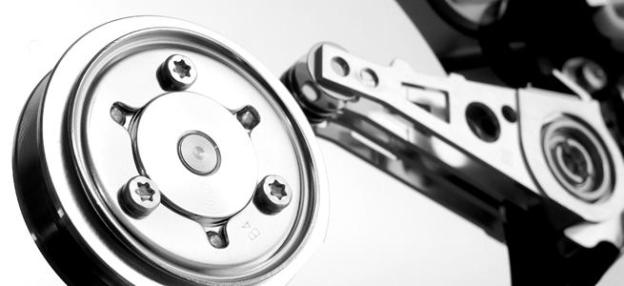
Hard drive failure is an inevitable fact of life — whether its your own fault or just an unfortunate byproduct of age. There will also come a time in your life when you’re going to want to recover a thing or two from said dead drive.
Your computer’s hard drive stores everything from your precious baby photos and financial data to your coveted illegal music catalog and work documents, among other things. To put it simply, your hard drive is essentially your life housed in a little mechanical box that functions as a data vault, one that can leave you utterly broken when it decides enough is enough. Although discouraging, hard drive failure doesn’t necessarily mean all is lost (though it can), it is possible to salvage and recover information and data contents from that expensive paperweight of yours. It just takes a bit of effort and a hell of a lot of luck.
We aren’t going to sugarcoat it for you, recovering a dead or damaged hard drive can be a real pain in the ass. The process can be utterly time consuming, frustrating, costly, and, in many cases, completely moot. Regardless, here’s are a few hard drive recovery tips and tricks.
Also check out our guide on how to choose an external hard drive as well as our comprehensive guide on how to back up your computer if you want save yourself some trouble in the future.
The recovery process:
- Signs of hard drive failure
- Troubleshooting hard drive failure
- Recovering data from your hard drive
Signs of hard drive failure
Your hard drive is like a car in many ways. You know how it performs, how it sounds, how it looks, and how long it takes to get from point A to point B on a daily basis. If something begins to feel askew with your car, you typically can sense it happening and can tell the end is nigh. The same thing goes for your computer’s hard drive. That being said, make sure to routinely back up your hard drive, especially if you repeatedly experience the symptoms below.
You should be familiar with how your computer typically sounds, thus keep an eye (and an ear) out for any unusual noises that may point to a damaged internal mechanism. For example, atypical clicking could indicate an issue with the read-write arm, while persistent grinding could foreshadow potential problems with the spindle motor or bearings. The sounds may be subtle, so don’t hesitate to lean in and take a good listen if hear anything unusual. Check out data recovery company Data Cent’s heart-wrenching collection of failing hard drive noises if you need a better idea of what giving up the ghost sounds like from a strictly audio standpoint.
As far as performance issues go, there a couple things that may or may not be indications of hard drive failure. Although frequent freezing and the occasional corrupted file can result from a multitude of issues, including malware and other non-hard drive related problems, they are also plausible signs of a dying hard drive. The time it takes to carry out the most basic tasks, such as saving or moving a file from the desktop to a specified folder, may also be warning signs of impending hard drive failure, as is Windows’ fabled Blue Screen of Death.
Physical appearance can also be a tell-tale sign of hard drive failure. However, dust and other airborne pollutants can easily damage your drive’s surface given its incredible sensitivity, so avoid opening the drive and exposing the inside components to the outside elements. Carefully remove your computer’s hard drive and inspect it for obvious signs of damage such as bent pins and or broken pieces. It’s unlikely your hard drive suffered much in the way of physical damage while housed in your computer, but it warrants a look either way.
Next Page: Troubleshooting hard drive failure.
Troubleshooting hard drive failure
So you’re hard drive is exhibiting signs worthy of hard drive failure, huh? You might want to run through a few troubleshooting methods to confirm that is in fact your hard drive and not some other non-related issue plaguing your computer. Some of the methods may seem rudimentary, but they could solve the issue nonetheless or give you a better idea regarding what the actual problem might be. If your drive is in fact exhibiting failure, keep in mind you’re running the risk of overwriting data and further damaging your hard drive a the more you use it. The best option might be to power it down, bypass these troubleshooting methods, and go straight to an expert. Proceed at your own risk.

Run a diagnostics test. Most hard drive manufacturers offer free diagnostic tools for assessing your the health of your hard drive. Fujitsu, Western Digital, Seagate, and Hitachi all offer robust diagnostics utilities that go above and beyond your standard, built-in OS diagnostic utilities. Simply navigate to your hard drive manufacturer’s support page to grab the latest version of the software.



Next Page: Recovering data from your hard drive.
Recovering data from your hard drive
If you successfully determined that the hard drive in question is on the fritz, there a few options available at your disposal. We cannot guarantee that you will be able recover your desired files, or any files for that matter, but it’s worth a shot to avoid other costly alternatives.

If you’re working with Macs, connect an active Mac to the machine with the potentially damaged drive via FireWire cable. While powering up the working Mac, hold the “T” button down until the FireWire icon appears to start your computer in Target Mode, giving you access to the target computer’s drive. Alternatively, you can access the Target Mode by clicking System Preferences panel, clicking Startup Disk Mode in the bottom right-hand corner.

- Recuva (Windows/Free): One of the better freemium options, Piriform’s Recuva does an excellent job scouring your dead, damaged or formatted hard drive for any and all files that remain salvageable. The software can also recover unsaved Word documents, deleted emails, music, and any other file you’ve lost. It’s simple, basic, and effective.

- TestDisk (Windows, Mac OS X, Linux/Free): TestDisk’s data recovery software is for the more computer-savvy user. The software was primarily designed to recover lost partitions and make non-bootable disks bootable again, but it unfortunately requires you to utilize the command prompt. Still, it’s capabilities exceed Recuva and FileSalvage, recovering data quickly and efficiently without overwriting your hard drive.

- FileSalvage (Mac OS X/$80): FileSalvage is one of the only options for pulling data off a connected hard drive in Mac OS X. Fortunately, it’s also one of the best. The software is expensive, but is frequently updated, and can recover more than 100 diverse file types from damaged and otherwise dead hard drives and corrupted media. Its interface is clean and a breeze to use, providing users with an effective method for extracting files from faulty hardware.

- UndeletePlus (Windows/$40): eSupports data-recovery software does little more than intended. Although the unregistered version of the software can detect recoverable files, users will have to opt for the entire package to actually recover the desired files. The program is incredibly good-looking and impressive, with one-two click functionality that makes for speedy recovery of a rich selection of files and formats.

- Data Rescue 3 (Mac OS X/$100): Prosoft’s premiere data recovery software is the most expensive on our list, but it also boasts the most horsepower under the hood. The Mac-exclusive scans and clones failing or damaged disks so your precious data can be recovered from the clone copy. The program feels clumsy at times but is a standout given the safety lengths to which it strives and its high recovery rate.


Still, there is no guarantee.
What do you think of our basic tips and tricks for hard drive recovery? We know it can be a long shot, but did any of our methods help you recover your files? Let us know in the comments below.



